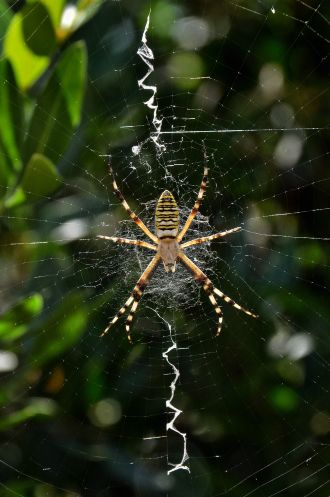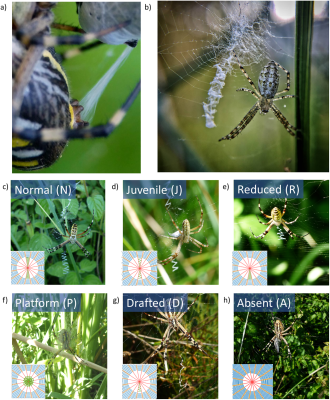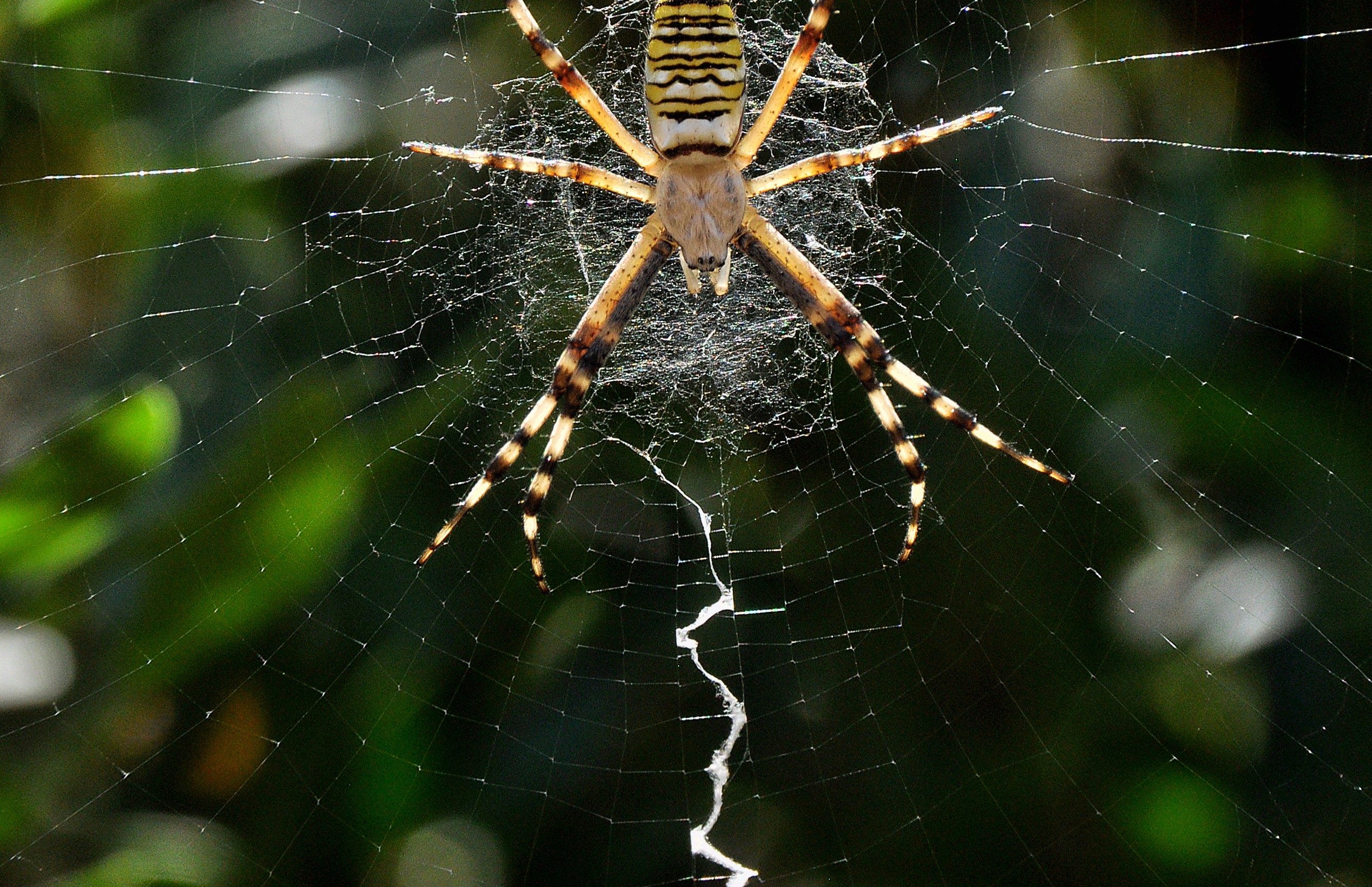Media release
From:
Spider web “decorations” may help pinpoint location of captured prey
New findings could inspire innovation in spider web-mimicking synthetic materials
The long-standing mystery around why spider webs sometimes feature “extra touches” known as stabilimenta has been revisited in a new study which suggests that their wave-propagation effects could help spiders locate captured prey. Gabriele Greco of the Swedish University of Agricultural Sciences and colleagues present these findings in the open-access journal PLOS One on October 29, 2025.
Many spider species build spiral wheel-shaped webs—orb webs—to capture flying prey, and many can incorporate stabilimenta into the web structure. These “decorations” may look like zig-zagging threads spanning the gap between two adjacent “spokes,” or threads arranged in a circular “platform” around the web center. The purpose of stabilimenta is unclear; proposed functions include water collection, body temperature regulation, and balancing insect attraction with deterrence of predatory wasps or birds.
Another possibility is that stabilimenta aid spiders by influencing the propagation of web vibrations triggered by the impact of captured prey. However, until now, no studies had explored this idea. To address the gap, Greco and colleagues observed different stabilimentum geometries constructed by wasp spiders, Argiope bruennichi. Based on these structures, the researchers then ran numerical simulations to explore how stabilimenta affect prey impact vibrations.
In the simulations, the presence or absence of stabilimenta affected web vibrations differently, depending on the angle of the waves generated by prey impact. For waves generated at angles perpendicular to the web surface or perpendicular to the threads spiraling out from the web center, stabilimenta caused negligible delays in wave propagation.
However, for waves generated in the same direction as the spiral threads, vibrations in webs with stabilimenta propagated to a greater number of potential detection points across the web—where a spider might sense them—than in webs without stabilimenta. This suggests that stabilimenta may boost a spider’s ability to pinpoint the location of prey caught in its web.
While these findings deepen understanding of stabilimenta, the authors note that their real-world impact on prey localization may be limited, with other functions having greater effects. However, they say, this study could inform the design of web-inspired synthetic materials with finely tuned wave-propagation abilities.
The authors add: “This study reveals that the decorative stabilimentum in Argiope bruennichi webs is more than just ornament, for it subtly changes how certain vibrations travel through the web. By combining field observations and simulations, the work discusses the mechanical role for stabilimenta and inspires designs for bio-inspired materials with tunable elastic properties.”
Multimedia





 International
International



